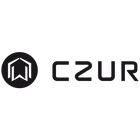Was ist ein berührungsloser Scanner?
Scanners that are incorporated with a method of separating scanning materials and scanning unit are defined as Non-Contact scanners.
Large book scanners are basically in non-contact type, because it is rather difficult to scan an entire book. The scanned item (book) is placed on the table, and the scanning element (camera) is on top of the device and the image is captured from top to bottom.
High-speed photographic apparatus is in the same type.
CZUR Smart Book Scanner is also a non-contact scanner.
CZUR ET16 Plus
Contact scanners are in close contact with the scanned document. For example, flatbed scanners, documents will be placed in glasses.
Paper-fed scanners are also contact scanners. Just like working mode of printers, paper goes in and out.
Advantages of non-contact scanners:
1) Fast scanning speed. The contact type is mostly point-by-point scanning, while the non-contact type basically captures full page information directly. For example, it may take 1-2 minutes to scan a color image with a flatbed scan, but CZUR ET16 Plus only takes 1-2 seconds.
2) Versatile materials can be scanned. Not only CZUR is able to scan a single page, it also scans curved materials such as books, objects, and files. Flatbed and paper-fed scanners can only scan single page documents.
Disadvantages of non-contact scanners:
1) Accuracy. This is a compromise between accuracy and speed. If the software algorithm is strong enough, lack of accuracy can be made up. However, the degree of remedy is limited by the human eye (can’t see difference from human eye).
2) The optical scanning element (camera) is affected by light. Different materials may work well, and reflections may also occur.
Scanning mechanism (CZUR products)
The combination of camera and laser line captures the original image and laser image of the scanned item (such as a book). The lasers obtain the curved outline of the page, and flatten the original curved page by the flattening algorithm.
After flattening, software will automatically process scanned documents: background purifying, edge cutting, smart paging, tilt correction and etc.
Learn more about Curve Flattening technology.
